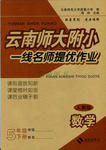题目内容
12.Whether we're 2 years old or 62,our reasons for lying are mostly the same:to get out of trouble,for personal gain and to make ourselves look better in the eyes of others.But a growing body of research is raising questions about how a child's lie is different from an adult's lie,and how the way we deceive changes as we grow."Parents and teachers who catch their children lying should not be alarmed.Their children are not going to turn out to be abnormal liars,"says Dr.Lee,a professor at the University of Toronto and director of the Institute of Child Study.He has spent the last 15 years studying how lying changes as kids get older,why some people lie more than others as well as which factors can reduce lying.The fact that children tell lies is a sign that they have reached a new developmental stage.Dr.Lee conducted a series of studies in which they bring children into a lab with hidden cameras.Children and young adults aged 2 to 17 are likely to lie while being told not to look at a toy,which is put behind the child's back.Whether or not the child takes a secret look is caught on tape.
For young kids,the desire to cheat is big and 90% take a secret look in these experiments.When the test-giver returns to the room,the child is asked if he or she looked secretly.At age 2,about a quarter of children will lie and say they didn't.By 3,half of kids will lie,and by 4,that figure is 90%,studies show.
Researchers have found that it's kids with better understanding abilities who lie more.That's because to lie you also have to keep the truth in mind,which includes many brain processes,such as combining several sources of information and faking that information.The ability to lie-and lie successfully-is thought to be related to development of brain regions that allow so called"executive functioning",or higher order thinking and reasoning abilities.Kids who perform better on tests that involve executive functioning also lie more.
62.What's the purpose of children telling lies?B
A.To help their friends out.
B.To get rid of trouble.
C.To get attention from others.
D.To create a popular image.
63.The underlined word"deceive"in Paragraph 1 can be replaced by"B".
A.handle troubles
B.tell lies
C.raise questions
D.do research
64.From the second paragraph we can know thatC.
A.which factors can reduce lying
B.why some lie more than others
C.it is normal for kids to tell lies
D.how lying changes as kids grow
65.What is NOT included in the passage?A
A.What to do with lying children.
B.Which kind of kids tells more lies.
C.Experiments about lying of young kids.
D.The reasons why kids tell lies.
分析 本文是一篇说明文.文章主要讲述了孩子说谎的原因、哪那些孩子说谎多及关于孩子说谎的实验,我们撒谎是为了摆脱麻烦、得到好处或者是为了让我们在别人眼里变得更好.那么孩子说谎是不是一种很不好的品质呢?作者在文章中告诉我们:孩子说谎是很正常的现象.随着年龄的增长,我们的撒谎行为会发生变化.孩子说谎标志着他们到达了一个新的发展阶段.年龄越小,说谎的人人越少;年龄越大,说谎的人越多.
解答 62-65.BBCA
62.B 细节理解题.根据第一段"our reasons forlying are mostly the same:to get out of trouble,for personal gain and to makeourselves look better in the eyes of others."我们撒谎的原因大都一样:为了摆脱麻烦、得到好处或者是为了让我们在别人眼里变得更好.故选B.
63.B 词义猜测题.根据整句话的含义:"不过越来越多的研究正在提出这样的疑问:孩子的谎言和大人们的谎言有何不同;随着年龄的增长,我们的撒谎行为会发生何种变化"可知,"deceive"应是"说谎"的意思,故选B.
64.C 推理判断题.根据第二段中的"The fact that childrentell lies is a sign that they have reached a new developmental stage."孩子说谎标志着他们到达了一个新的发展阶段."故选C.
65. A 细节理解题.文章主要讲述了孩子说谎的原因、哪些孩子说谎多及关于孩子说谎的实验,而A选项"如何处理撒谎的孩子"文章没有提到,故选A.
点评 本文是一篇科教类阅读,题目涉及多道细节理解题,做题时结合原文和题目有针对 性找出相关语句进行仔细分析,结合选项选出正确答案.推理判断也是要在抓住关键句子的基础上合理的分析才能得出正确的答案.

 云南师大附小一线名师提优作业系列答案
云南师大附小一线名师提优作业系列答案 冲刺100分单元优化练考卷系列答案
冲刺100分单元优化练考卷系列答案